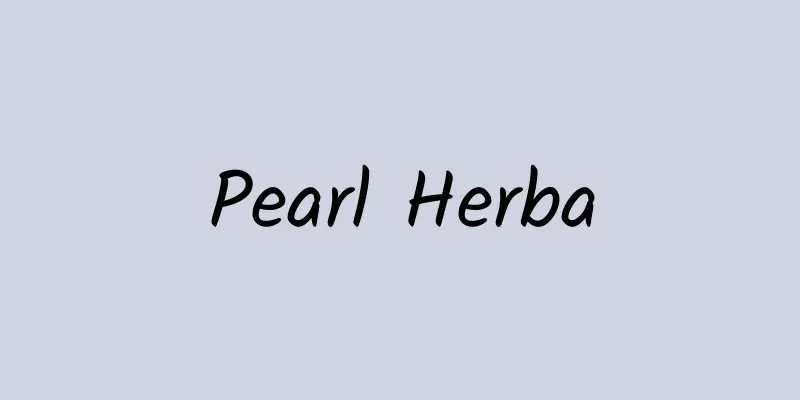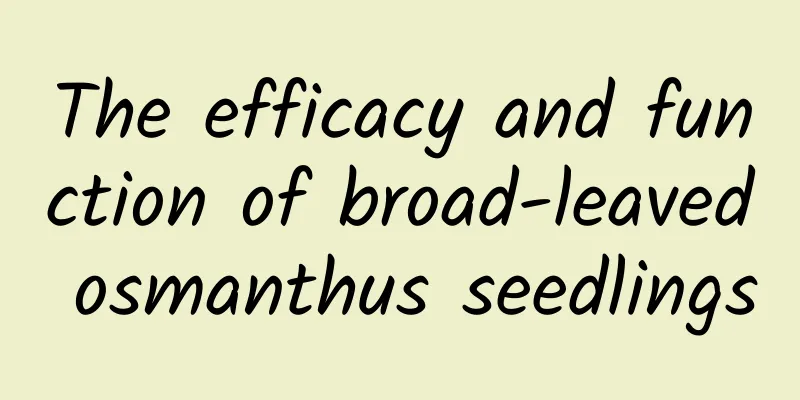Pearl Herba

|
The efficacy of pearl bone grass Pearl bone grass is a kind of traditional Chinese medicine, which is the dried whole herb with rhizome of the plant ground bone grass. Its rhizome is cylindrical, about 10 cm long; the surface is grayish yellow, the cross section is yellowish white, and woody. Its usage rate in medicine is also quite high. So what are the effects of pearl bone-penetrating grass? What are its benefits to the human body? Today I will introduce to you the effects and functions of pearl grass. The stem is cylindrical or slightly angular, 10 to 20 cm long, with a diameter of 1 to 2 mm at the lower end; the surface is light green to gray-green, covered with gray-white soft hairs; it is hard, easy to break, and the cross section is yellow-white. The leaves are mostly curled and wrinkled, gray-green, covered with gray-white soft hairs; they are brittle and fall off easily. Sometimes the inflorescence is left with small round flowers and fruits. Slight odor, light taste. The best ones are green in color, with tender branches and pearl-shaped fruits. It is mainly produced in Shandong, Henan and Jiangsu. In addition, it is also produced in Gansu, Shanxi and Shaanxi. Plant morphology Perennial herb; stem erect, 25-50 cm high, many branches, covered with approximate short soft hairs. The leaves are papery, lanceolate or ovate-lanceolate, 1.8--5.5 cm long, 0.5--2.5 cm wide, apex gradually pointed, rarely acute, with obtuse tip, base broadly cuneate or rounded, margin with sparse crenate or sometimes deeply fissured, with glandular teeth at the tips, sparsely pubescent above, pubescent below or only with veins; petiole less than 5 mm long or nearly sessile; stipules ovate-lanceolate, about 1.5 mm long. The raceme is 6-15 cm long, with 20-30 male flowers in the upper part and 6-10 female flowers in the lower part. There are sometimes 1-2 male flowers on both sides of the female flowers in the middle of the inflorescence; bracts are ovate-lanceolate or ovate, 1-2 mm long; male flowers: 2-4 flowers born in Pearl Herba Bract axil, pedicel about 1 mm long; calyx lobes ovate, about 1.5 mm long, sparsely covered with long soft hairs on the outside; petals obcordate, clawed, about 0.5 mm long, hairy; stamens 8--12 (--15) branches, filaments hairy; female flowers: 1--2 flowers born in bract axils, pedicel about 1 mm long, up to 5 mm long when fruiting, and often curved; calyx lobes ovate-lanceolate, about 1.5 mm long, acuminate at the apex, sparsely covered with long soft hairs, petals similar to male flowers, but shorter, sparsely covered with soft hairs or ciliate, with veins; styles 3, each with 2 deep lobes, lobes pinnately torn. The capsule is oblate, about 4 mm long and 6 mm in diameter, covered with soft hairs and with tubercles. The seeds are ovate, about 2 mm long, with an acute apex and are gray-brown. The flowering and fruiting period is from May to September. |
>>: The efficacy and function of traditional Chinese medicine mulberry leaf
Recommend
The efficacy and function of pear wood ash
Speaking of pear wood ash, we are all familiar wi...
Can only male monkeys be king? She became the unprecedented "Wu Zetian among monkeys"!
In July 2021, a special inauguration ceremony was...
World Day to Combat Desertification and Drought丨To combat desertification, please start with these little things
June 17 World Day to Combat Desertification and D...
When you get up in the morning, should you eat breakfast first or brush your teeth first? The answer is...
Original graphics and text, please contact the or...
What are the effects and functions of lotus leaves?
We can buy a wide variety of lotus leaf products ...
Scientists finally uncover the secret of the mysterious fruit that changes human taste
There is a small fruit in the world that can turn...
The efficacy and function of stone flower
Traditional Chinese medicine requires the use of ...
What are the effects and functions of toad clothes grass
Many people think that toad licorice cannot be us...
[Smart Farmers] Pay attention to this living "little stick"! How powerful is the "master of disguise" in the biological world?
In nature, many animals are masters of mimicry. S...
Can science be planned? The little-known "night science"
This article is part of a series of commentary ar...
This butterfly is famous for its epic migration, but now it's endangered
On July 21, 2022, the World Conservation Union (I...
Spending thousands of yuan to test your child's talent genes? It's definitely a waste of money and a rip-off for your child!
1. The application value of genetic testing in me...
The efficacy and function of Taibai Panax notoginseng
Traditional Chinese medicine is very effective in...
Toxicity of Morinda officinalis
Morinda officinalis is a Chinese herbal medicine,...









